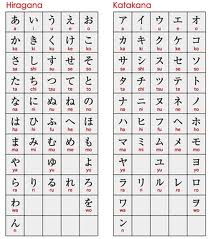I’ve gathered this information to the book written by “YUKIHIRO
SHIMAMURA” titled BASIC JAPANESE. I just want to share the knowledge that I also learned for those who is interest in learning. For those who are so fanatic of Japanese anime and unfortunately can’t understand it without translation. This is simple tips from the book.
- The final syllable “SU” of verbs is not pronounced as such. For example “SOO DESU” it must be pronounced as “SOO DES”.
- “DESHITA” is pronounced as “DESH’TA”
- “N” ending in Japanese (like pan, son) is considered separate consonant “Son” will be “so” and “n”
- Accent is only on two levels, high or low. It will end to diff. meaning through the accent.
Example: HASHI (low-high)-bridge
HASHI (high-low) – chopsticks
LESSON 1
DAILY EXPRESSION
· OHAYOO GOZAIMASU- GOOD MORNING
· KONNICHIWA-GOOD AFTERNOON
· KONBANWA- GOOD EVENING
· HAJIMEMASHITE - HOW DO YOU DO?
· DOOZO YOROSHIKO-IM GLAD TO MEET YOU
HOW JAPANESE SENTENCE CONSTRUCT?
BASIC GRAMMAR
NIHONGO ENGLISH
S-WA-C-DESU S-BE-V-C
S-SUBJECT C-COMPLEMENT V- VERB
NOTE:
WA- is an article normally placed after the subject. It has no English equivalent.
DESU- is used for English be-verb (is, am, are) always at the end of a sentences. It also pronounced as DES
After this lesson you will understand more on how to use different greetings and grammar that japanese used. Lesson 2 will teach us how to use KORE,SORE,ARE,KA,NAN in a sentenced.








1 (mga) komento:
I study your all contain it is really very lovely, look for some relevant details here.
B2B holiday ecards
corporate ecards for the holidays
multilanguage business ecards
multilingual corporate ecards
Mag-post ng isang Komento